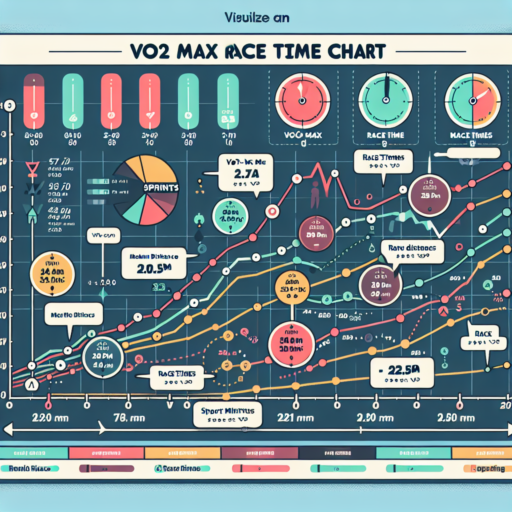What should your vertical oscillation be while running?
Understanding your vertical oscillation while running is crucial for optimizing performance and minimizing injury risk. Vertical oscillation refers to the vertical motion of your body’s center of mass during each step. Ideally, this movement should be minimized to enhance running efficiency. Studies suggest that an optimal range lies between 6 to 8 centimeters (about 2.4 to 3.1 inches) for most runners. Keeping within this range ensures that energy is being efficiently used for forward motion rather than being wasted in excessive vertical movement.
Several factors can influence your vertical oscillation, such as stride length, running speed, and individual biomechanics. Runners with a longer stride length tend to have higher vertical oscillation, which may not always be beneficial. Adjusting your stride to be slightly shorter can help in maintaining a more efficient vertical oscillation rate. Moreover, as running speed increases, vertical oscillation tends to increase as well. It’s important for runners to be aware of these dynamics and adjust their running form and stride accordingly to stay within the optimal range.
To effectively monitor and adjust your vertical oscillation, utilizing modern running technology like GPS watches and stride sensors can be incredibly beneficial. These devices provide real-time feedback on your running mechanics, allowing for immediate adjustments. However, it’s also vital to integrate strength training, particularly for the lower body and core, to support a stable and efficient running form. Over time, with the right training and awareness, runners can optimize their vertical oscillation, leading to improvements in both speed and endurance on the track.
What is a good vertical ratio percentage running?
Understanding the vertical ratio (VR) is crucial for runners aiming to enhance their efficiency and performance. The VR refers to the ratio of the vertical oscillation (the amount of ‘bounce’ in your step) compared to the total distance covered in one stride, presented as a percentage. A low vertical ratio indicates a running form that is more horizontally efficient, meaning you’re propelling yourself forward rather than upward, which is often seen as advantageous in running economy.
Experts in running biomechanics suggest that a good vertical ratio falls between 7% and 9% for most runners. Achieving this range signifies a balance between the necessary lift and forward propulsion, minimizing the energy expended on vertical movement that doesn’t contribute to forward momentum. It’s worth noting that elite runners often exhibit a VR at the lower end of this spectrum, due to their highly optimized and efficient running styles.
However, it’s important to understand that the ideal vertical ratio can vary slightly based on individual running mechanics, body types, and the specific demands of different running events. For instance, sprinters might have a slightly higher VR due to the need for greater lift during high-speed running, whereas endurance runners would benefit from minimizing vertical oscillation to conserve energy over long distances. In essence, while the 7-9% range is a solid benchmark, tailoring your running form to your unique physiological and event requirements is key for optimal performance.
Is high vertical oscillation bad?
Understanding vertical oscillation – the up and down movement while running – is crucial for athletes and fitness enthusiasts aiming for optimal performance. But the question arises: Is high vertical oscillation bad? The simple answer is that it’s not always straightforward. High vertical oscillation can indicate inefficiencies in running form, potentially leading to increased energy expenditure and a higher risk of injury. However, it’s important to consider the context and how it applies to individual goals and biomechanics.
When analyzing running mechanics, vertical oscillation plays a significant role in overall energy efficiency. Runners with higher vertical oscillation tend to have a ‘bouncier’ run, which can lead to faster fatigue due to the extra energy required to lift the body upwards. This increased vertical movement can put additional stress on the joints and muscles, potentially leading to overuse injuries if proper care and training adjustments are not made.
Conversely, a certain degree of vertical oscillation is natural and necessary for running. It’s a component of the body’s natural biomechanics and contributes to the propulsion and stride length adjustments. The key is finding the right balance that matches one’s physical capabilities and running efficiency. Techniques to reduce excessive vertical oscillation include focusing on core strength, improving running form, and incorporating specific drills that promote a more efficient foot strike and body alignment.
No se han encontrado productos.
How can I improve my vertical oscillation?
Improving vertical oscillation is crucial for runners and athletes looking to enhance their efficiency and performance. Vertical oscillation refers to the amount of bounce in your step as you run, with a lower amount generally indicating better running economy. Here are some targeted strategies to optimize your vertical movement.
Strengthen Your Core
One effective way to reduce vertical oscillation is by strengthening your core muscles. A strong core stabilizes your pelvis during the running motion, which can significantly reduce unnecessary vertical movement. Incorporating exercises like planks, dead bugs, and Russian twists into your training regimen can be particularly beneficial.
Focus on Running Form
Optimizing your running form is another key factor in improving vertical oscillation. Aim to maintain a slight forward lean from your ankles, keep your shoulders relaxed, and ensure your feet land under your body. This helps in propelling you forward more efficiently, reducing the energy spent on vertical movement. Practicing form drills and cadence exercises can also aid in developing a more effective running form.
Incorporate Plyometric Exercises
Plyometric training involves explosive jump training, which can increase power and efficiency in your running stride. Exercises like box jumps, jump squats, and bounding drills can improve your muscle’s response, thereby reducing vertical oscillation. It is recommended to start with lower intensity plyometrics and gradually increase the intensity to avoid injury.




